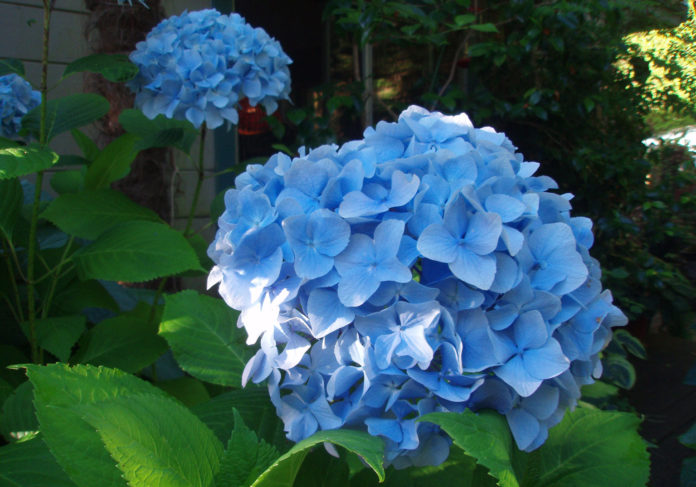
Every year when the Pantone Color of the Year is announced, I write a column about all the great plants that echo that color. Not this year, though. The 2025 Pantone Color of the Year is Mocha Mousse, and while this probably looks great on the walls of a living room, it’s not what most gardeners request when they are envisioning their new garden.
Actually, I have never had a client request a brown palette. We already have such lovely shades of brown in our trees, soil, mulch, fences, decks—you get the picture—that even chocolate cosmos rarely make the request list.
Pantone describes this shade of brown as “capturing a global mood of connection, comfort and harmony.” In the garden, you can include flowers in shades of cornflower blue, lilac and dusty rose to complement the soft browns of nature.
Many of our favorite flowers are cornflower blue or lilac. Most salvias have blue flowers of different shades. Lupine, columbine, wisteria, pansies and omphaloides are other plants with lovely blue flowers. Hydrangeas often are this same shade depending on the acidity of the soil. Delphiniums and some hardy geraniums also bear flowers of blue or lilac. Dusty rose flowers include saponaria and roses such as Easy Does It.
Warm colors tend to be more stimulating, dynamic and noticeable from afar than cool hues which are more calming and understated. Warm colors advance visually, cool ones recede. So to make a small garden appear larger use cool blues and lavenders in the back with just a touch of scarlet, orange or yellow up close for contrast. Do the opposite to make a large space more intimate—position warm colors at the back, cool colors in front.
Garden colors aren’t static either. They vary with time of day, the season, the weather and the distance from which we view them. Also color perception varies among people and not all people with normal vision see color the same way. Since color and light are inseparable, white, yellow and pastels seem more vivid in low light. In overcast or fog, soft colors like pink, creamy yellow, pale blue and lavender come alive. As night approaches and the earth is bathed in blues and violets, those colors are the first to fade from view.
So don’t forget white, cream and silver flowers and foliage to brighten up the night garden. White combines nicely with both warm and cool colors so it’s easy to place. It’s an effective peacemaker between colors that would clash if placed side by side. In shady gardens, plants like white bleeding heart, wavy cream-edged hosta, white browallia, white hydrangea, lamium and white calla lily pop at night. Gardens in more sun can plant Holly’s White penstemon, silvery bush morning glory, dichondra Silver Falls, fragrant Iceberg roses, white sweet alyssum and Whirling Butterflies gaura.
Have fun with color. Don’t be afraid to try new combinations. I often hear people say, “I like all the colors except orange.” Orange naturally combines with blue, as these “sunset” colors are opposite each other on the color wheel. Think how nice bright orange California poppies look with blue marguerites or peach Iceland poppies with blue violas.
Foliage is a rich source of garden color. You can find plants with yellow, red, purple, blue or gray foliage as well as shades of green with variegated, marbled or streaked leaves.
Plants grow and gardens change over time. Realize that you’re embarking on a journey that may take many years. Don’t be afraid to play with color even if you don’t get it right the first time. Just learn from your mistakes and make adjustments. And have fun getting there.
Jan Nelson, a landscape designer and California-certified nursery professional, will answer questions about gardening in the Santa Cruz Mountains. Email her at ja******@*ol.com, or visit jannelsonlandscapedesign.com.










